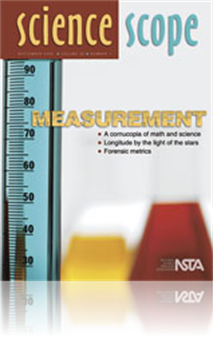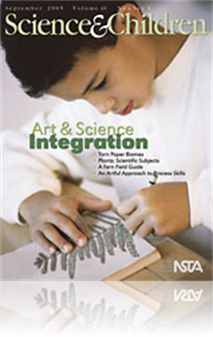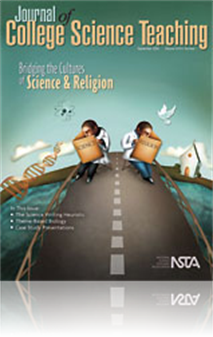All Resources
Journal Article
A teacher’s most effective strategy for creating a safe lab environment is to train students to follow recommended safety procedures. Students who understand the reasons for the safety rules and the dangers of breaking the rules can assume responsi...
Journal Article
Teacher's toolkit: Measurement stations
This issue of Science Scope debuts Teacher's Toolkit, a new column featuring an array of tips, strategies, and resources for teachers addressing instructional issues in science. Over the course of the school year, the column will feature how-to sugge...
Journal Article
Never Too Young for a Concept Map
This article provides ideas on how concept mapping can be adapted to reach early childhood learners when organizing their thoughts in a concrete and/or graphic/visual format, while connecting concepts and linking prior knowledge to new knowledge....
Journal Article
Creating torn paper biomes integrates science and visual art in a performance task that assesses students' knowledge of the characteristics of the biomes of the earth. Students who have difficulty communicating their knowledge in writing can show wha...
Journal Article
Science instructors sometimes avoid inquiry-based activities due to limited classroom time. Inquiry takes time, as students choose problems, design experiments, obtain materials, conduct investigations, gather data, communicate results, and discuss t...
Journal Article
"Say when." That expression, usually reserved as an inquiry by a solicitous dispenser of party libations, is apt for the serious case writer. In both cases it is meant to find out how much is enough. How much liquid or information should we dole ou...
Journal Article
A Message from the NSTA President: Developing a World View for Science Education
In this section, NSTA President Michael Padilla shares a story reflecting the affect that immigration has had on almost all school systems across the country. He shares his motivation for choosing Developing a World View for Science Education as the...
Journal Article
Satellite Remote Sensing of Coral Reefs
Coral reefs are one of the most endangered ecosystems as coral reef coverage has declined dramatically in the past three decades. In recent years, satellite remote sensing has become a popular and effective mapping tool for ecological studies, especi...
Journal Article
Self-efficacy is a key predictor of achievement and retention in most academic areas, including the sciences. In this study, the effects of teaching strategies on self-efficacy and course climate were examined. Question and answer, collaborative lear...
Journal Article
Point of View: Evolution and Friendship
According to the National Center for Science Education (2001), forty-four states have faced challenges to the teaching of evolution, in venues ranging from local school boards to state legislatures. The saddest result of these emotional confrontation...






